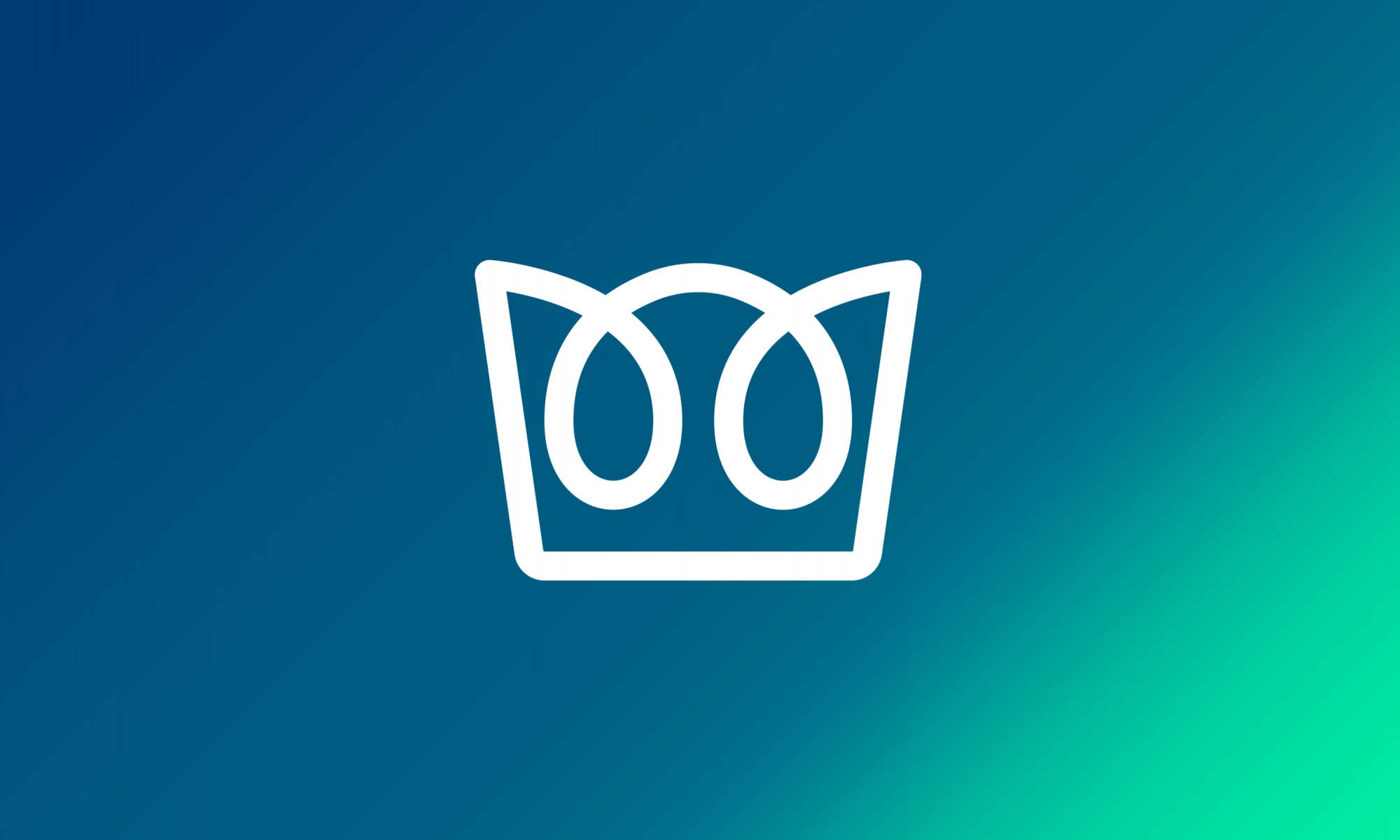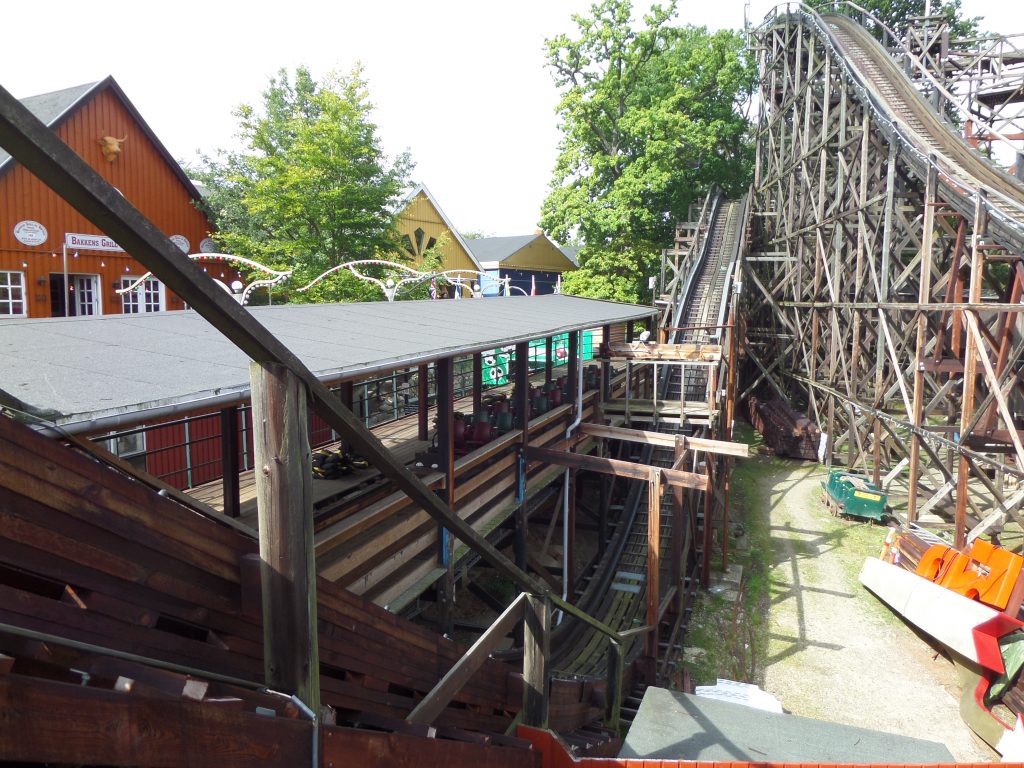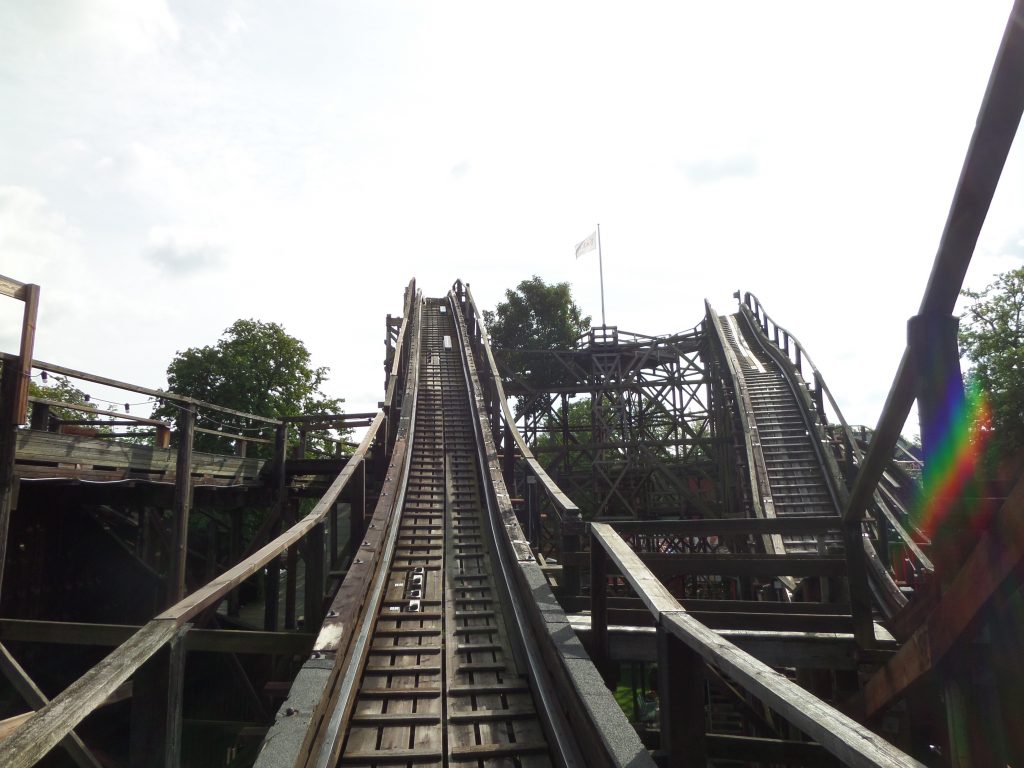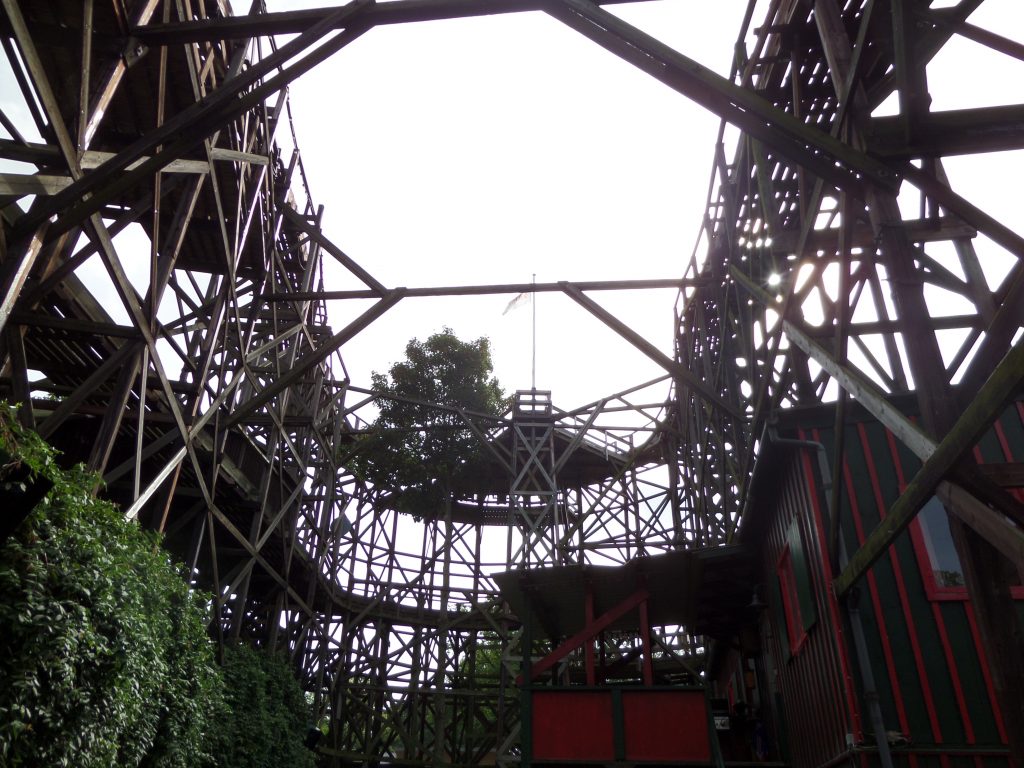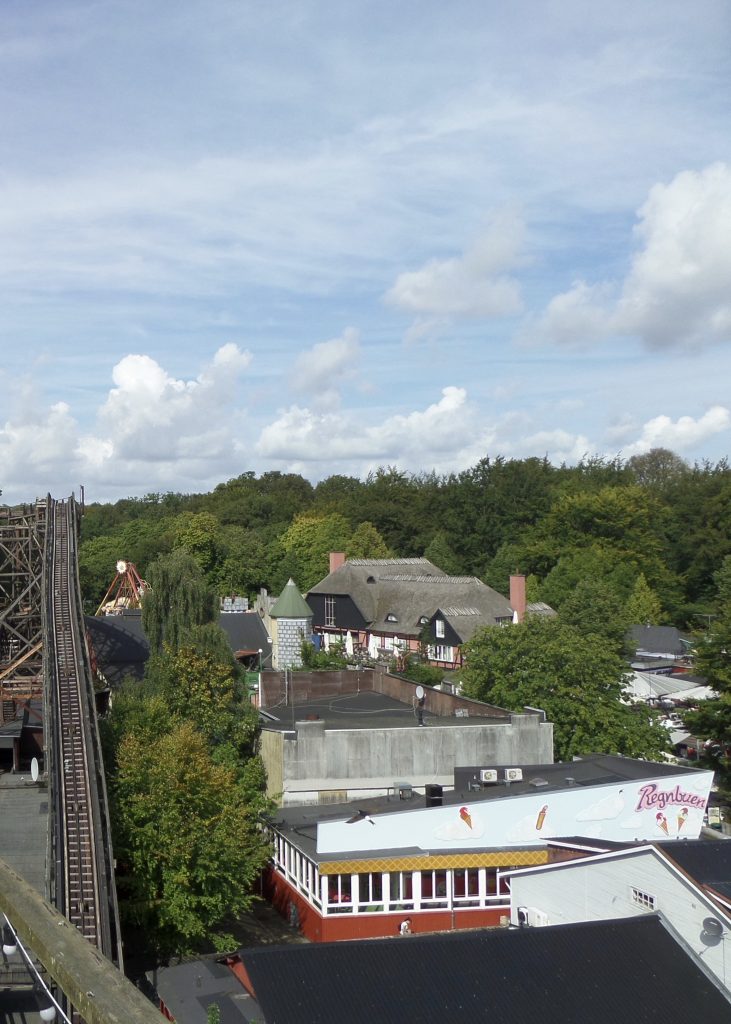With the theme park season drawing to a close in many countries and people forced to stay home again, we thought we’d bring you a brand new article series. Expect regular updates from myself as we explore one of the most beautiful, cultural and historical regions of Europe: Scandinavia!
We’ll be taking you from Norway across to Finland, through Sweden and then down to Denmark. We’ll be providing you with detailed insights and top tips into the theme parks each of these countries has to offer. We will also be diving into which rollercoasters and attractions you aren’t going to want to miss out on. So grab a cup of coffee, a slice of cake and enjoy!
– In the past, many of our images have been posted, featured, and shared on forums, social media platforms and websites around the web. We work hard to provide the coverage that we do, and we encourage our audience to share our content and use our images, BUT ONLY IF proper credit is given to thecoasterkings.com Thank you! –
After an exciting trip with Emma to the original Legoland, we’re heading out of Billund to explore another one of Denmark’s famous cities. This week’s park is located in the capital of Denmark, Copenhagen, or København if you’re Danish. As you can see on the map below, Copenhagen is located close to the city of Malmö, which is in neighbouring country Sweden. Copenhagen is situated on the island Zealand with its airport is located on a different island altogether. Denmark and Sweden are essentially linked together via Copenhagen and Malmö. The two cities have an interconnecting bridge, called the Øresund Bridge, which links the two cities by both road and rail.
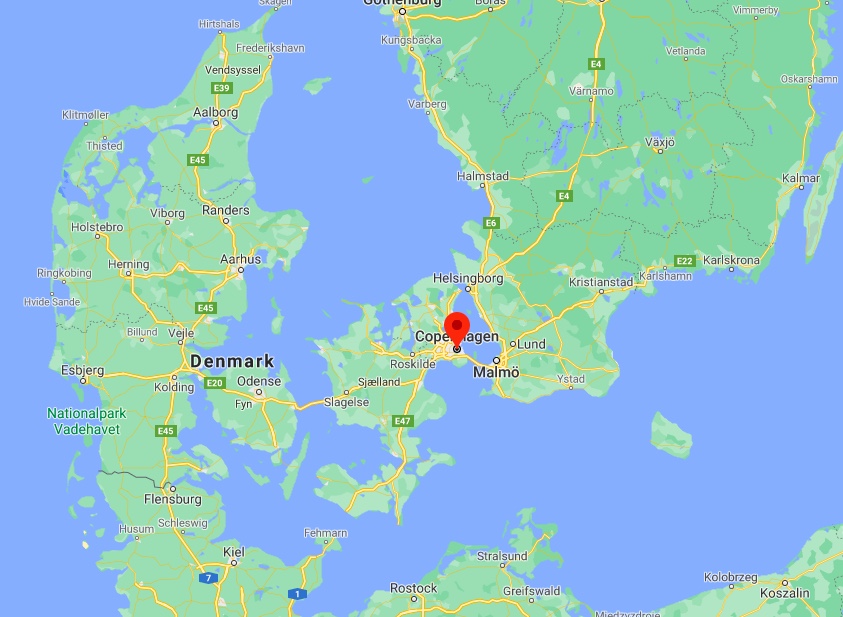
Copenhagen is home to various educational establishments including the University of Copenhagen, founded in 1479. Copenhagen also has an extensive metro line which was established in 2002 and the busiest airport in all of the Nordic countries. Copenhagen is well known for its vast range of museums, bakeries, cute open air restaurants, and various cultural sites. Copenhagen can be traced back to a Viking fishing village in the 10th century. The Gammel Strand, pictured below, contains a canal which used to be the site of a natural harbour. Nowadays you can take various boat tours to popular sites including Edvard Eriksen’s The Little Mermaid statue.
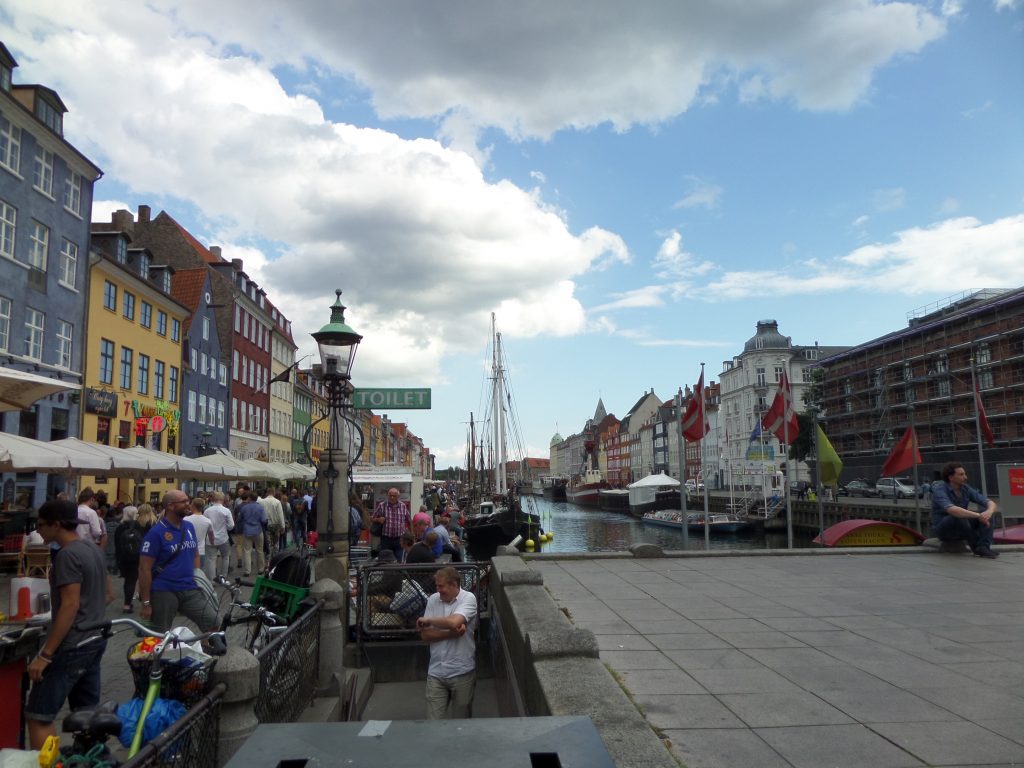
Today we’re utilising Copenhagen’s extensive transport network and taking a short train ride out of Copenhagen to a nearby suburb called Klampenborg. Klampenborg is an affluent area with many large houses and is home to one of the most popular green spaces in Denmark, Jægersborg Deer Park. This park contains a large deer population and ancient oak trees. Adjacent to the deer park is the oldest operating amusement park in the world. It opened in 1583 and attracts around 2.7 million visitors a year, a huge number of guests for a park of such a small size. The amusement park has free admission, unlike rival park Tivoli Gardens, and is the second most popular tourist attraction in Denmark now at 438 years old.
The amusement park is called Dyrehavsbakken, but is commonly referred to as Bakken. Dyrehavsbakken translates to “The Deer pasture’s hill” in reference to the adjacent Deer Park. The park’s origins trace back to a natural spring which was discovered by Kirsten Piil. This spring attracted residents of Copenhagen to travel here for good quality water. Large crowds encouraged entertainers and performers to congregate near the spring. These fair-like attractions marked the beginnings of today’s Bakken. Despite a period of Royal restrictions on the property the parks reputation continued to grow. It attracted entertainers from all across Europe, including Pjerrot, who is still the park’s mascot to this day. Entertainment and performances are still an integral part of Bakken amusement park and the park hosts several shows. These include a cabaret show, circus, and other shows which take place on the park’s main stage, shown in the photo below.
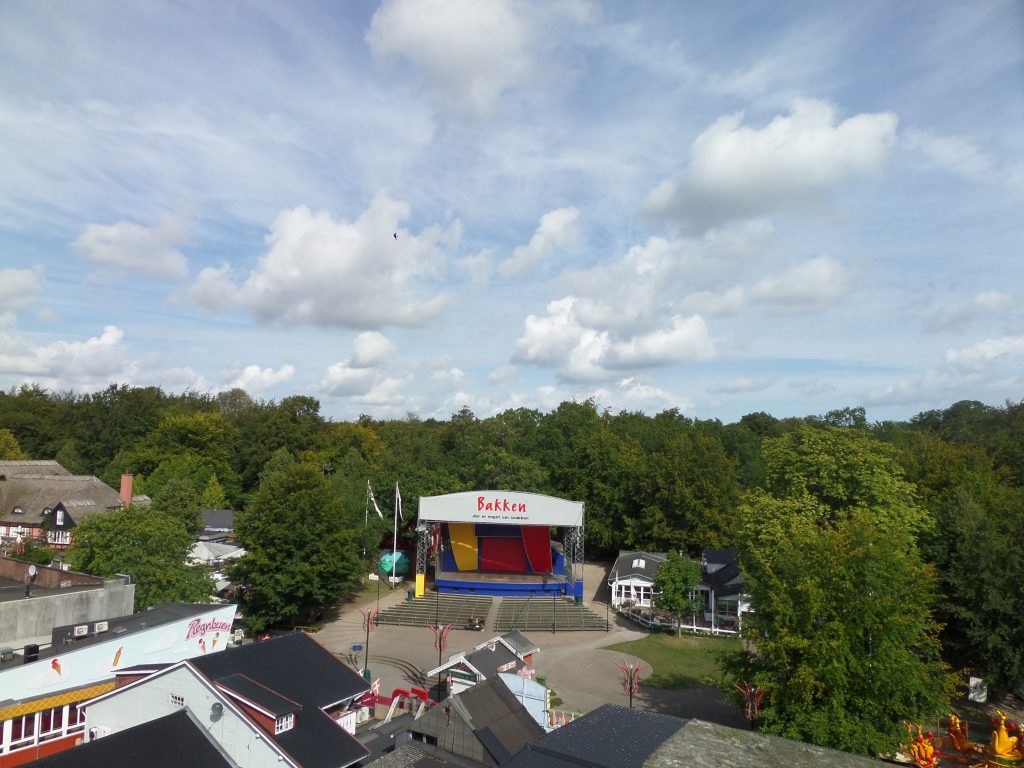
Bakken started as a health site for Copenhagen’s residents but today it is a thriving amusement park crammed with both old and modern rides, shops, restaurants and other forms of entertainment. Bakken is home to five different rollercoasters including one of the oldest rollercoasters in Denmark and in the whole of Europe. The name of this attraction is Rutschebanen which simply translated from Danish to English is “Rollercoaster” . The rollercoaster which stands in the park today is still retains its original track structure (constructed and opened in 1932)alongside modern KumbaK trains introduced in 2010. The entrance to the rollercoaster and one of the original trains can be spotted in the iconic photo below.
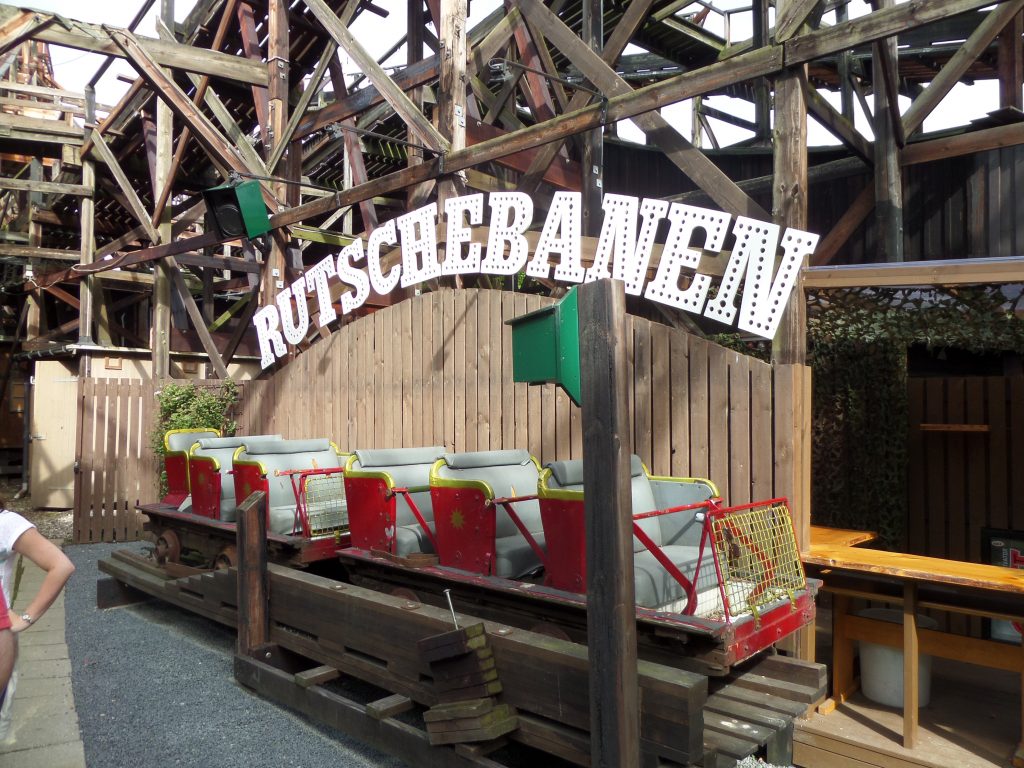
When we visited Bakken, we were lucky enough to take part in a backstage tour of the Rutschebanen. We got to go behind the scenes into the workshops and learn about the history of the attraction. Rutschebanen itself was built by an engineer and designer known as Valdemar Lebech, who helped with the design and construction of Rutschebanen at Tivoli Gardens, Vuoristorata at Linnanmäki, and the classic Bergbanen at Liseberg. Unfortunately, Rutschebanen at Bakken lost its “classic” status in 2010 when the new trains were installed. The new trains no longer feature a brakeman who control the speed of the train. The utilisation of a brakeman is replaced magnetic brakes, throughout the track. We were also lucky enough to take a walk up the coaster track itself- so join us as we start at the bottom of the track and walk up to the top of the second drop which offers some stunning views across the rest of the park!
Normally taking part in these sort of experiences where you get to walk up to a top of a rollercoaster structure requires a helmet and being fastened to a harness attached to a catwalk. With Rutschebanen you can walk up to the top of the coaster without any harness or PPE. This makes it easier for engineers to carry out any maintenance and their routine checks. There are railings on either side of the wooden coaster track providing stability when climbing up or down the track. The way the track is manufactured is interesting as well, as there are wooden rungs lining all of the drops. An engineer or anyone who needs to climb up or down the track can do so easily without losing their footing or balance. On a side note, I love how the railings on the fences have small lights hanging below them, as these light up in the evening and make the rollercoaster look really pretty in the dark.
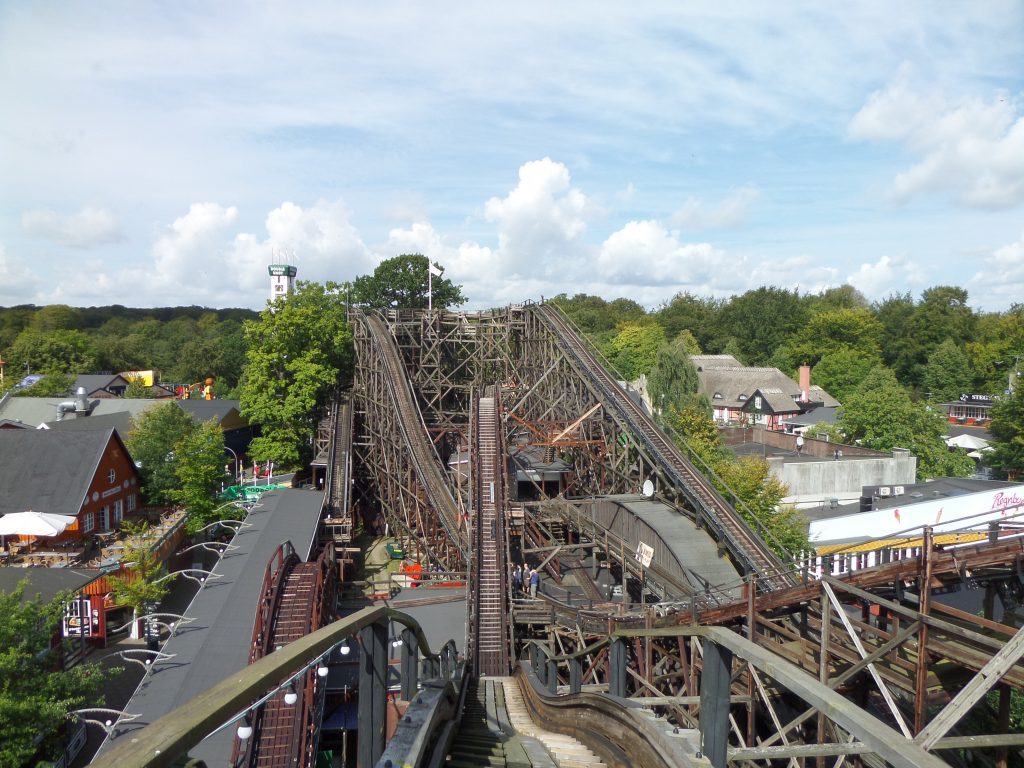
Rutschebanen stands at an impressive height of 72.4ft (22.0m) tall, which is pretty awesome for an almost 90 year old rollercoaster! The trip to the top of the track in the train is powered by a cable lift consisting of a 22mm wire which moves at around 5.5m/sec . Once you reach the top of the lift hill, you turn a corner and plummet down the first drop at speeds of up to 34.2mph (55.0km/h). The rest of the rollercoaster is similar to other scenic railways: drops or double downs separated by slow turnarounds. Rutschebanen also includes a dark tunnel section. This traditional rollercoaster is airtime-filled, but felt a bit sluggish due to the magnetic brakes. I believe this is actually the same layout or very similar to Vuoristorata at Linnanmäki, which still has the brakeman and rides a lot better. Something else that I find particularly interesting is on the turnaround before the second drop there’s this awesome artwork featuring the park’s logo and the park’s mascot Pjerrot.
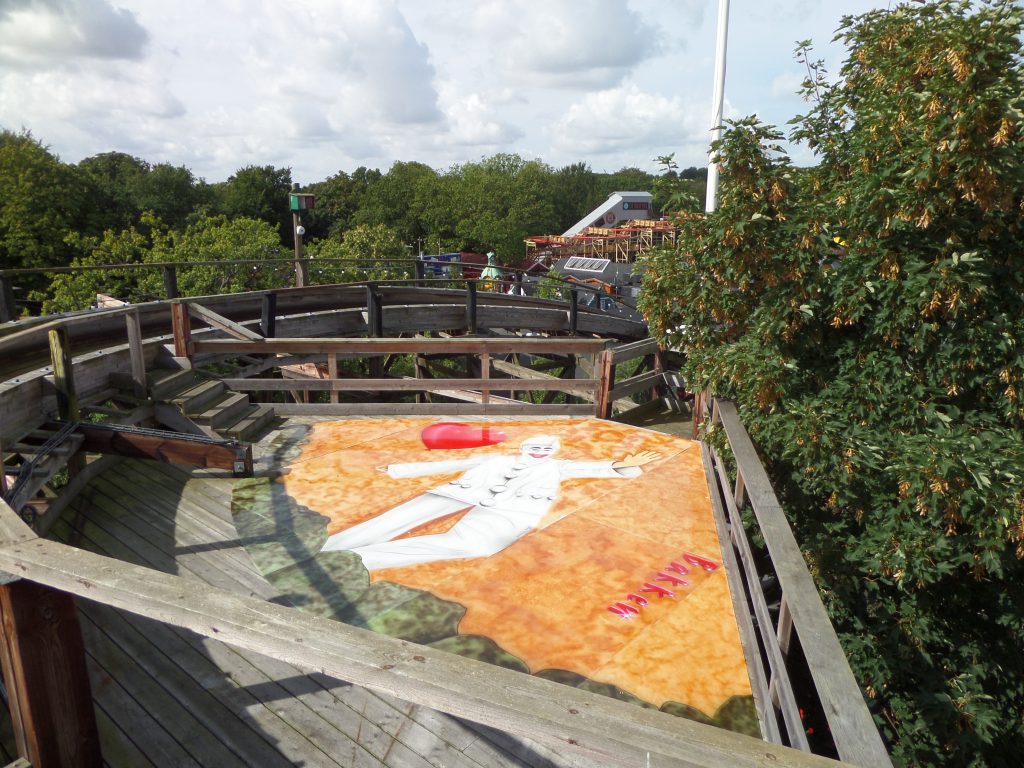
Our walk up to the top of Rutschebanen also meant we got to see stunning views of the rest of the park and surrounding Jægersborg Deer Park. From the top of Rutschebanen you can see various different attractions that the park is home to which we are going to explore now. The park is home to various different Scandinavian style buildings which contain theatres, shops and restaurants. With the park being free entry, it is considered an entertainment park where people can come in simply to watch a show or go for a meal, without having to commit to the full ticket price for rides. If you wish to ride, you can buy individual tickets or an unlimited wristband. On the right hand side of the photo below, you can see the top of the TårnGyset “Double Shot” tower. This is a 98.4ft (30m) S&S shot tower which is quite small but packs a punch! In the background of the photo you can see the park’s Mack Rides wild mouse rollercoaster, Vilde Mus. This is one of the more modern rollercoasters in the park, opening in 2012.
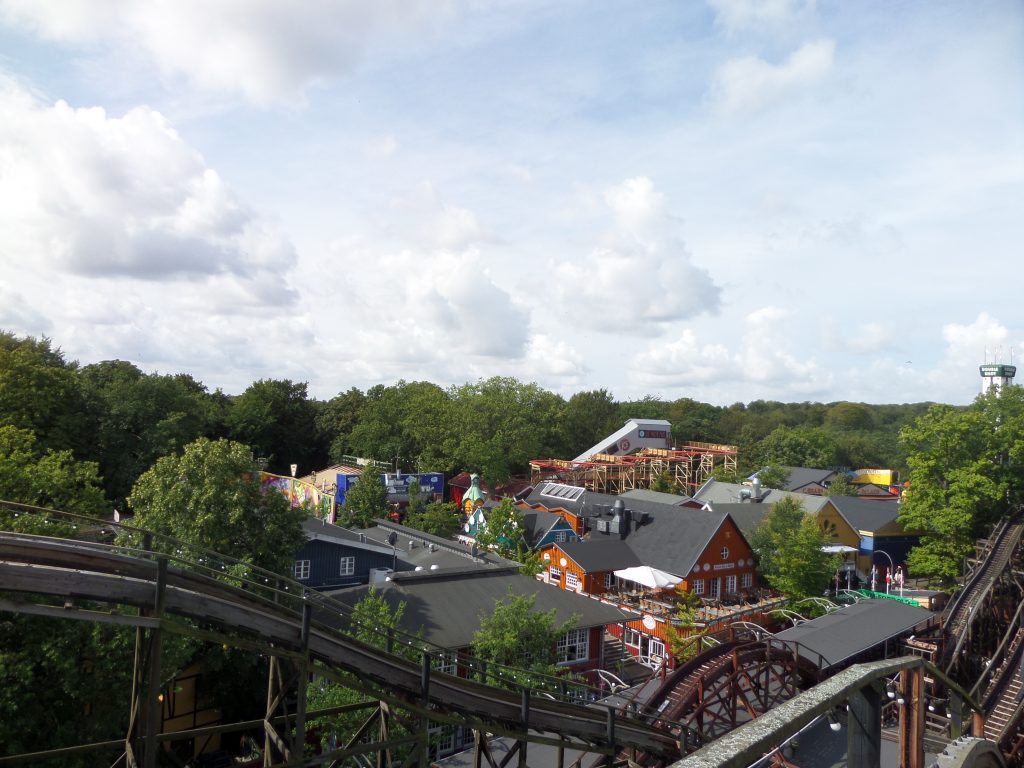
Another classic attraction which was located in Bakken is the Zierer Flitzer rollercoaster which is known as Racing. It is unclear when Racing first opened at Bakken, as showman Rudolf Robrahn toured the funfair circuit with the coaster from 1971 to 1974. Bakken claims that Racing arrived and has been operating at the park since 1972. Nonetheless, it was one of the park’s most classic and oldest attractions, sadly it was removed from the park in 2020. On Racing one adult or a child accompanied by an adult sit in their own individual car and speed round the track, completing a series of dips, twists, turns, and helices. The coaster cars are themed to individual race cars with individual numbers so you know who’s winning the race. This was a good, family-fun and fast paced attraction so I’m sad to see it go as it fit the park really well- I’m unsure if there are plans for it’s replacement. One of the most unique things about the attraction is there is actually a member of staff who pulls a lever at the offload station to engage the brakes when the car comes back into the station. You can see it in the on-ride video I took below!
Bakken is also home to many more well-known rides and attractions, some for kids, some for thrill-seekers and also a range for the whole family to enjoy. Bakken is an amusement park, but has a very funfair-style vibe with individual rides having their own theming and a lot of them playing modern pop music. Another photo which I took from the top of Rutschebanen looking out onto the left corner of the park showcases a couple of the park’s more thrilling attractions. The black tower-style ride you can see towards the back of the photo is known as Sky Roller. This is a Gerstlauer-built ride where you have to try and flip your fighter plane upside down by moving the paddles from side to side in time with the ride. In front of Sky Roller, you will see a building which is housing a rollercoaster with orange track and black supports- one of my favourite colour schemes for a rollercoaster.
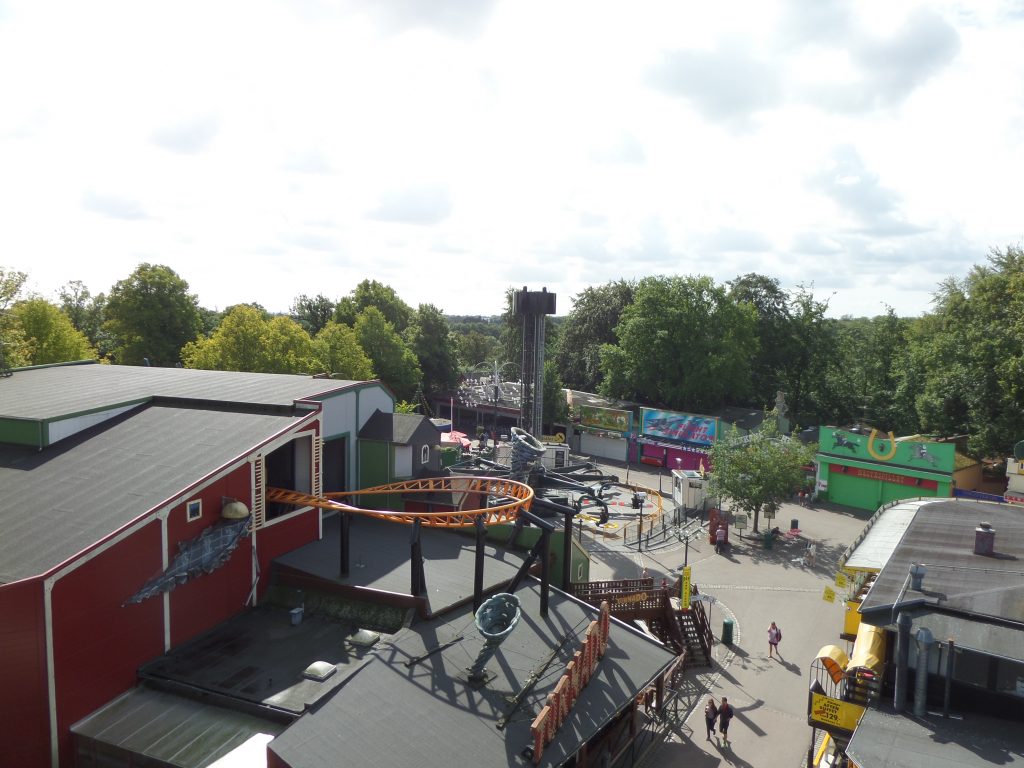
This rollercoaster is known as Tornado– it’s manufactured by Intamin and it’s well-known for being one of the most thrilling, intense and insane rides that Bakken has to offer. I’m not really too sure how I feel about Tornado on the whole. It features spinning cars where riders face in towards each other. These cars also have over the shoulder restraints which are quite uncomfortable. This is one of the most whacky and completely insane rollercoasters I have ever been on. It’s an extremely compact layout, only reaching heights of 39.4ft (12.0m) but still reaching speeds of up to 31.7mph (51.0km/h). The reason for this is that Tornado utilises a high speed chain lift system- but lets just call it a launch. The uphill lift hill (launch) brutally throws you into the first drop, which is followed by a series of twists, turns, s-bends and helices before you get brutally thrown once again into the final brake run and back into the station. To be quite honest, this rollercoaster is completely nuts, and it’s painful too, but in a weird way I quite enjoyed it. If you’re thinking to yourself, well how brutal can a rollercoaster of such a compact size really be? Well, think of Furius Baco, but then downscale it into a miniature rollercoaster in a building. Oh- and on top of all of that you’re spinning round and round sideways the entire time at breakneck speeds. Without a doubt one of the most brutally intense and bonkers rollercoasters I’ve ever been on in my life.
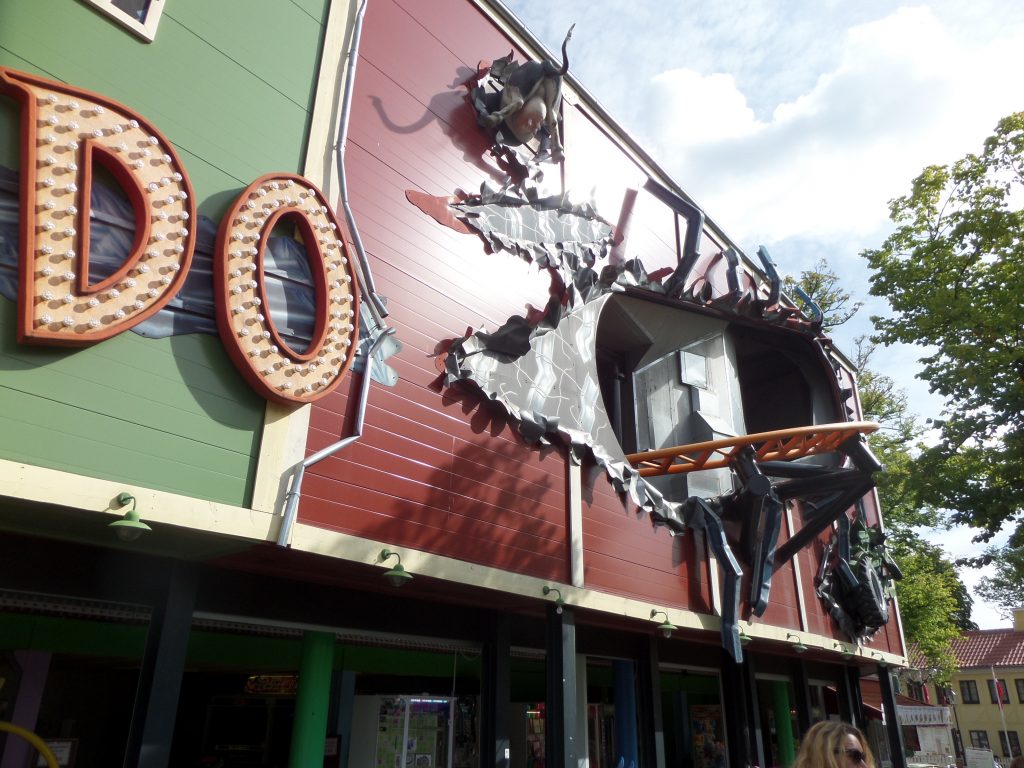
We already talked about Sky Roller, one of the park’s most thrilling flat rides, but what other rides and attractions does Bakken have to offer to guests? The park has a log flume for a hot summer’s day called the Vandrutschebanen (Water rollercoaster), which although feels a bit dated and rickety, contains a fun layout with two drops. Be warned though, you do get pretty wet on this one! The park is also home to more flat rides, some more thrilling and some for the whole family, including a polyp attraction and a pirate ship. The park is a bit mish-mash, as the rollercoasters have an amusement park styling whereas the flat rides have more on a funfair vibe. One of my favourite flat rides was called Extreme, a Moser speed flip, which you can watch the on-ride video I took below. Unfortunately this ride suffered a lot of downtime and a lot of issues with the cars locking/unlocking, meaning cycles were short and that it was no longer viable to keep in the park. It has now been replaced with a KMG afterburner (freak out) which has a more modern and simplistic theme.
In the photo on the left hand side you should be able to see the lift hill of Rutschebanen, Bakken’s most iconic rollercoaster. As we said before the lift hill utilises a cable lift to pull the train to the top of the hill. If you take a look closely at the photo though, you should be able to notice that the lift hill is a bit wonky- which is a very interesting element of this rollercoaster’s design. Over to the right hand side of the picture, you should be able to see various buildings. These buildings are home to shops and various takeaways but also to a variety of different indoor attractions. The park has two cinema experiences- one a 5d cinema and the other called Crazy Theatre, which is an interactive cowboy themed experience. The park is also home to a dark ride shooter called Safari, which I don’t remember being particularly memorable in any way. Finally, in the grey stone building with the green turrets is the park’s ghost train: Spøgelsestoget. I remember this ghost train being absolutely terrifying- very eerie and dimly lit with animatronics and possibly an actor or two as well!
Having explored most of the park, it’s time to check out the last two rollercoasters the park has on offer. We actually stayed in Bakken until the evening, so that we could check out the park in the dark with all the lights. I wouldn’t really say that the park needs an entire day though, probably more of a half day experience especially as queues don’t get too long. I’d recommend possibly going in the morning and returning in the evening to see the lights or alternatively just making a long afternoon out of the park. The park is home to a Zierer family coaster called Mariehønen, which is themed to a ladybird and has been operating in the park since 1981. Finally, the park also features a relatively major family coaster which is called Mine Train Ulven. This has been operating at Bakken since 1997 and is manufactured by Intamin. Mine Train Ulven features a tunnel element and reaches heights of 60.7ft(18.5m) and speeds of up to 40.4mph (65.0km/h). You can check out an on ride video of Mine Train Ulven in the video below. I’ve got to say that this was a really awesome family coaster and it was actually pretty fast paced and thrilling. I love the way it is landscaped in between the trees, on top of the station building and through a tunnel, utilising the space which is available. The airtime on this rollercoaster is pretty awesome; because it’s so fast paced you do get thrown around and out of your seat quite a bit!
All in all, Bakken is one of the most unique amusement parks I’ve been to so far. The park definitely has a lot of charm due to its history and heritage. It was really interesting to discover Bakken’s past and how the park is still operating today under title of oldest amusement park in the world. It was great to try out a mixture of classic and more modern attractions including the historic Rutschebanen and the unique but equally insane Tornado. The park has a lovely vibe to it, full of charm and atmosphere with a carnival feeling and upbeat music playing around the park. It’s also home to loads of entertainment and shows so it ticks those boxes too. The park gets quite a lot of visitors annually, due to its heritage and its location, so be prepared for a busy summers day out, but the queues are never bad. Bakken amusement park is a classic which deserves to be visited purely for the nostalgia as well as a selection of incredibly unique attractions. It’s perfect to combine with a sightseeing trip to Copenhagen and the infamous Tivoli Gardens.
We’re heading back to the heart of Copenhagen and staying overnight in a hotel just round the corner from the main station. Luckily, our hotel was also located near to Tivoli Gardens amusement park which is located in the centre of Copenhagen and we will be taking you around Tivoli in our next instalment. Our next episode is also our final episode of our Scandinavia Series, so please do join us for our finale as we discover one of the most popular and prestigious amusement parks in Europe.

